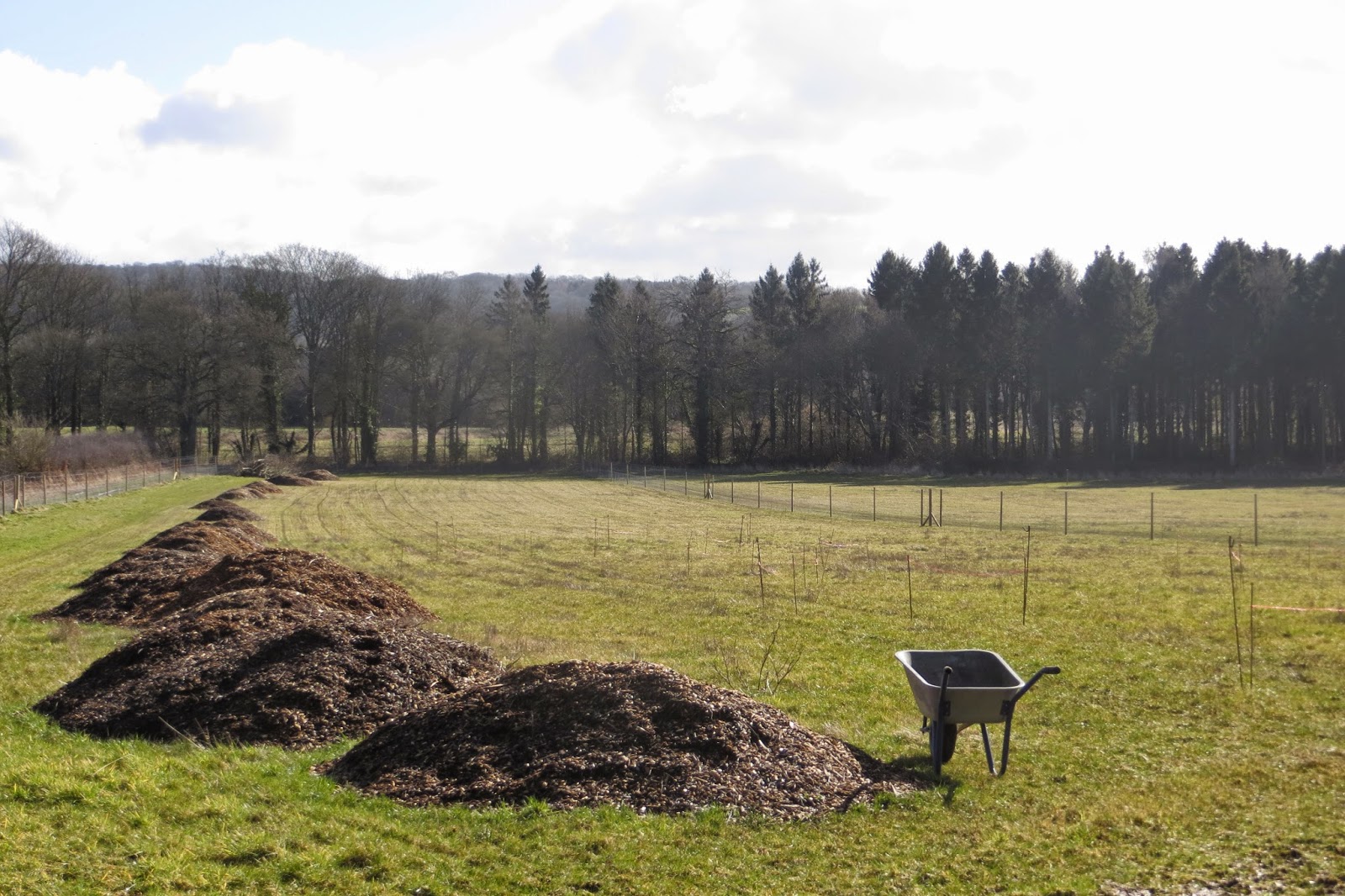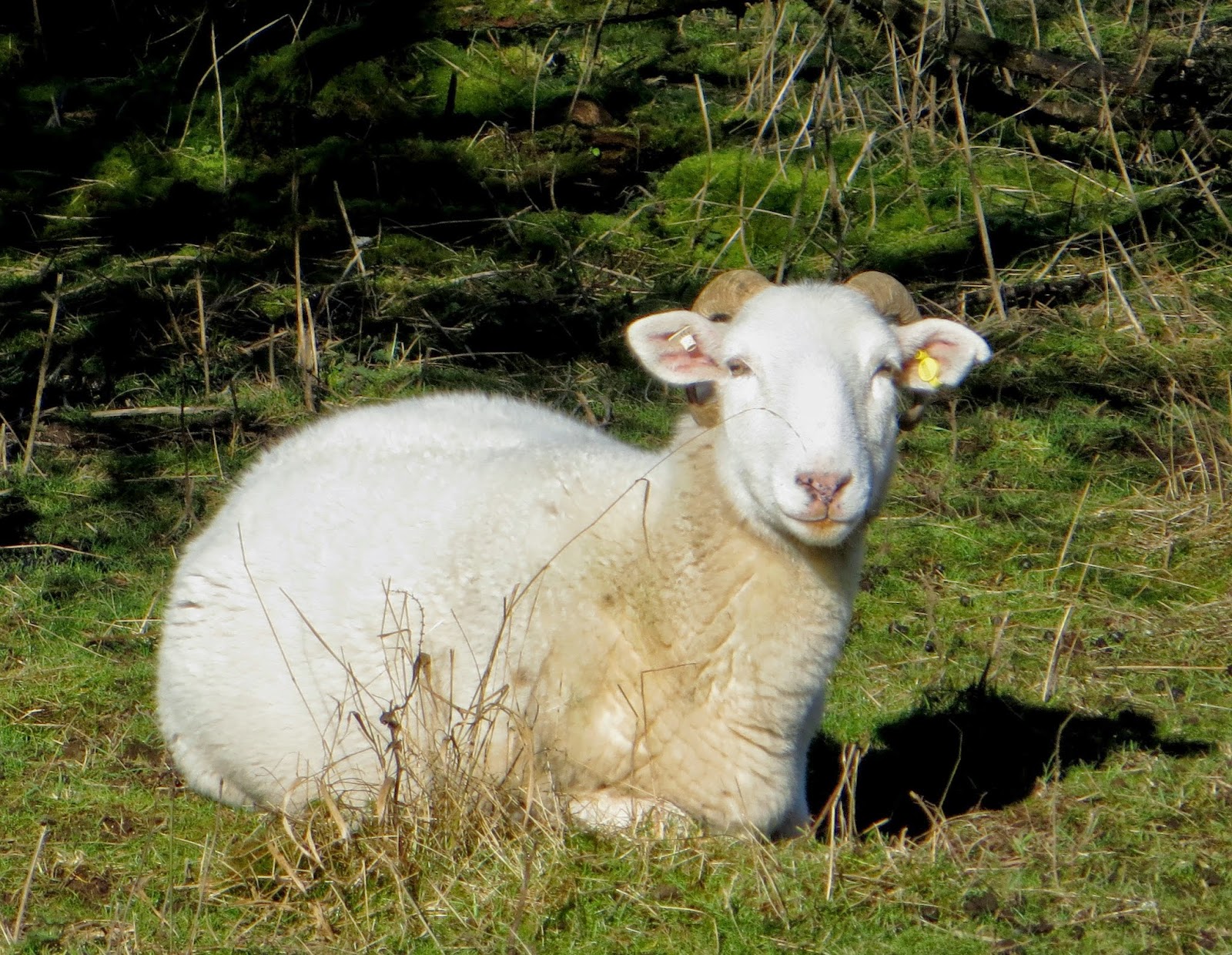Nuthatches! The Nuthatches are
back! Yes, once again in the large
ornamental trees that line the driveway walk at Mottisfont, nuthatches can be
seen, hopping up and down the trunks and collecting muddy bits and pieces to
line their chosen nest hole with. I have
been keeping an eye on Jasper’s tree for a while now and so I was delighted
when, last week I saw the first Nuthatches of spring have returned to it to
build their nest inside a tiny hole, way up high. These could be the original parents of
Jasper, my Nuthatch chick of last year, or indeed, one of them could be Jasper
himself - having returned to his tree to
start his own brood…I shall keep watch with interest.
All the birds are starting to make
their nests at the moment, Corvids are flying around with beaks full of twigs, Woodpeckers
are furiously drumming trees to advertise themselves to potential mates, the
Ravens have been spotted around Oakley Copse and Pied Wagtails are showing an
interest in our tractors – they are notorious for nesting in awkward places like
in the arm of the timber crane! The
rookery in the tall Sycamore and Plane trees in the gardens is one vast, noisy
mass of nests, Rooks and Jackdaws all constantly cawing and calling all day
long. Woe betide anyone who walks
beneath without a hood or umbrella – chances are you will get a big old splat
of bird poo to adorn your hair or clothing!
March seems to have consisted of
warmer days interspersed with chilly winds that have meant we have kept our
fleeces and hats on for the time being.
This cool weather has however assisted with our tree planting, in that
we have been able to complete the tree planting on the estate by Queen Meadow
copse whilst the trees are all still in their cold winter dormancy state. Our Monday and Thursday volunteers have had
several days here and Ryan and myself have spent more time on the site
planting, planting, planting until finally, yesterday we dug the last hole, put
in the final tree and wheel barrowed the last load of mulch and boom! A new
woodland was born. May it grow, thrive
and prosper, and grace our land for many decades to come, so that I can go and
sit under the leafy boughs as a wizened crone and remember planting them all
those years ago….
 |
| The final wheel barrow of mulch... |
Talking of wizened crones and old
things, we have been doing some work on Stockbridge Down to replace the hurdles
that surround our Bronze Age Barrows on the site. The barrows are Scheduled Ancient Monuments
and are fenced off using wooden hurdles as it stops grazing livestock, people
and dogs from trampling over them and causing them damage. It also creates a feature of them visually
and indeed the sight of the barrow on the highest point of the Down, standing
out against the skyline makes a very recognisable image that stays in the mind.
The original hurdles were put in
place many years ago and as a result of weather, itchy cattle bottoms and the
passage of time, many had become broken and worn so I had a brand new load made
by a green wood worker in West Sussex.
He used his own Sweet Chestnut timber and enormous skill and handcrafted
me 56 new hurdles which are absolutely stunning to behold. The Court Leet of Stockbridge kindly funded
the project and last week myself and the volunteers were finally able to rip
out the remains of the old, broken hurdles (which were looking old enough to be
classed as archaeology themselves) and installed the brand new ones and boy, do
they look fantastic. Perhaps it is just me,
as someone who enjoys and appreciates green wood working and use of natural
materials, but I think they look stunning and I am very, very pleased with them
– may they stand for many more years.
Also whilst we were carrying out the work I found a shard of pot rim
that had been dug up from a mole hill on the barrow – potentially Bronze
Age?
 |
| A willing team of volunteers... |
 |
| And you can rebuild history! |
 |
| The volunteer team, whom a dog walker fondly referred to as 'barrow fairies'...snigger. |
Finally last week myself, Laura
and Michelle took a trip to the National Trust property of Stourhead in Wiltshire. I’d never been before, and I hadn’t seen the
clips of films like Pride and Prejudice that were filmed there (the classic Mr
Darcy in the lake scene) so I was not expecting what I saw – what a PLACE. An absolutely stunning place, a huge rounded
valley of beautiful gardens and woodlands, which surrounds the central point of
a large and beautiful lake which has its own little islands in the middle. Temples, stone grottos and other structures
are found in amongst the trees as you walk around the site and even better,
there is a very nice pub within the grounds.
 |
We walked around the valley with the sun shining and the lake glittering
like diamonds. As we paused at the top
of one path, at the site of a Grecian looking temple and looked out over the
estate Laura commented about the things that have been filmed there; “Imagine
if we bumped into Keira Knightley, right now, just walking round”. Two ladies walking by heard this and piped up
quickly – “I’d much rather bump into Colin Firth!” Sitting in the sun and looking at that view I
thought the place was beautiful enough, even without being adorned with good-looking
Hollywood superstars – although that’s not to say I wouldn’t appreciate a
glimpse of Johnny Depp if he happened to be passing by….

.jpg)















